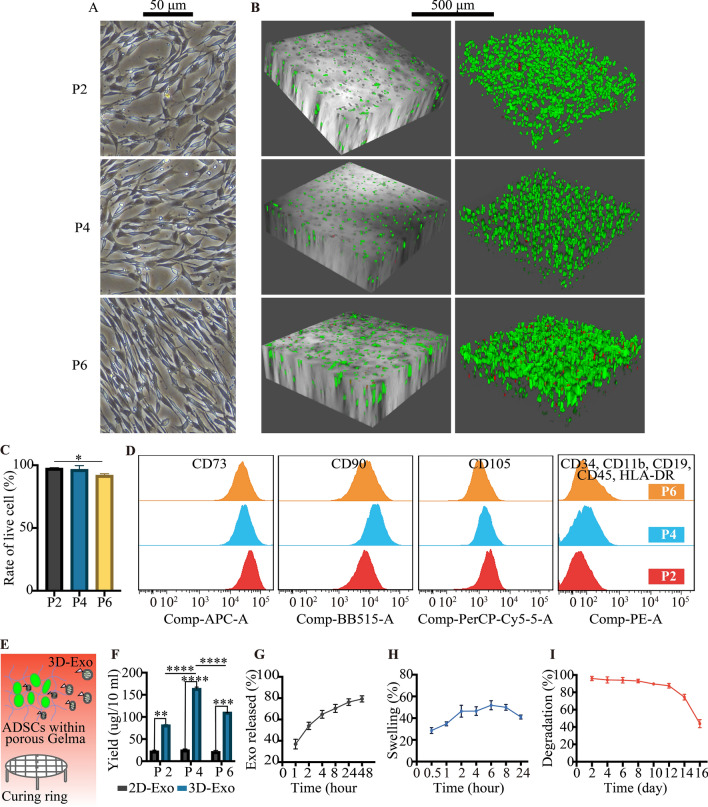Fig. 1.
Identification of P2, P4 and P6 human ADSCs and characterization of porous Gelma hydrogel. A Representative images showing the spindle-like morphology of ADSCs in 2D culture dish. Scale bar: 50 μm. B Representative images showing the live and dead ADSCs within porous Gelma hydrogel, C and the rate of live cell. Scale bar: 500 μm. Green: live ADSCs. Red: dead ADSCs. D Characteristic surface markers of ADSCs evaluated by flow cytometry analysis. E Diagram showing 3D-Exo released from porous Gelma hydrogel. F Exosomes yield comparison between 2D- and 3D-cultured conditioned medium from the culture of P2, P4 and P6 ADSCs. G Profile of exosomes released from the porous Gelma hydrogel. H Swelling ratio of the porous Gelma hydrogel in PBS (pH 7.2) at 37 °C. I Degradation ratio of the porous Gelma hydrogel. Data was presented as the mean ± SD of three number of replicates. ∗∗p < 0.01, ∗∗∗ p < 0.001, ∗∗∗∗p < 0.0001

